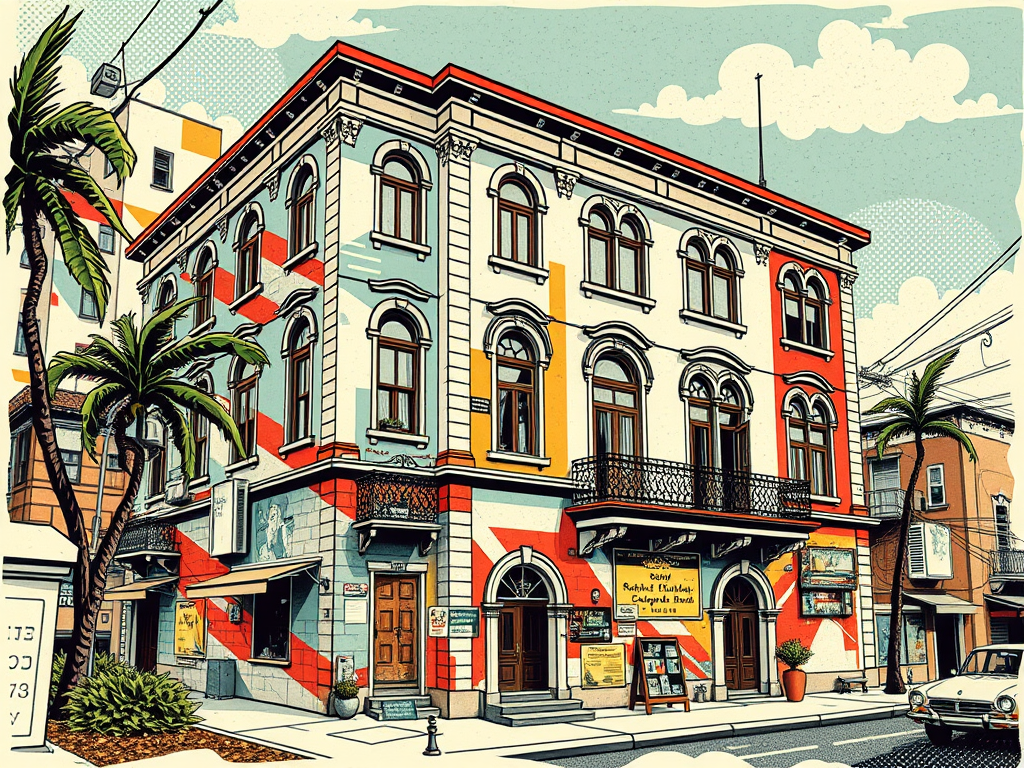
Historical Properties: Profiting from Restoring Greek Heritage Buildings
Reading time: 15 minutes
Table of Contents
- Introduction
- The Greek Real Estate Landscape
- Understanding Heritage Buildings
- The Restoration Process
- Financial Considerations
- Legal and Regulatory Framework
- Market Demand and Potential Returns
- Case Studies
- Challenges and Risks
- Future Outlook
- Conclusion
- FAQs
Introduction
In the realm of real estate investment, few opportunities offer the unique blend of cultural preservation, financial potential, and historical significance quite like the restoration of Greek heritage buildings. As we delve into this fascinating niche of the property market, we’ll explore how savvy investors are turning centuries-old structures into profitable ventures while simultaneously contributing to the preservation of Greece’s rich architectural legacy.
The Greek real estate market, particularly in the realm of historical properties, presents a compelling case for both domestic and international investors. With a combination of favorable economic conditions, growing tourist interest in authentic experiences, and government incentives for restoration projects, the stage is set for potentially lucrative opportunities in this sector.
The Greek Real Estate Landscape
To fully appreciate the potential of heritage building restoration in Greece, it’s crucial to understand the broader real estate context in which these opportunities exist.
Current Market Trends
The Greek property market has shown remarkable resilience in recent years, rebounding from the economic challenges of the past decade. Key indicators point to a market on the upswing:
- Property prices in major urban centers have seen steady year-over-year increases
- Foreign investment in Greek real estate has grown significantly, particularly in the luxury and vacation home segments
- The short-term rental market, driven by platforms like Airbnb, has created new revenue streams for property owners
These trends create a favorable environment for investors looking to enter the heritage building restoration market, as demand for unique, character-filled properties continues to grow.
Government Initiatives
The Greek government has recognized the potential of heritage restoration as a driver of economic growth and cultural preservation. Several initiatives have been introduced to encourage investment in this sector:
- Tax incentives for restoration projects that adhere to strict historical preservation guidelines
- Streamlined permitting processes for approved heritage restoration plans
- Grants and subsidies available for certain types of historical building renovations
Additionally, the greece investor visa program offers a pathway to residency for non-EU investors who make significant real estate investments, including in heritage properties.
Understanding Heritage Buildings
Before diving into the restoration process, it’s essential to understand what qualifies as a heritage building in Greece and the unique characteristics that make these properties valuable.
Defining Heritage Buildings
In Greece, heritage buildings are typically structures that hold historical, architectural, or cultural significance. These can include:
- Neoclassical mansions from the 19th century
- Traditional stone houses in rural villages
- Former industrial buildings with unique architectural features
- Byzantine-era structures in historical districts
The Ministry of Culture and Sports is responsible for designating and protecting these buildings, often placing restrictions on how they can be modified or restored.
Architectural Styles and Features
Greek heritage buildings showcase a diverse range of architectural styles, reflecting the country’s rich history:
- Cycladic architecture: characterized by whitewashed cubic forms and flat roofs
- Neoclassical: featuring symmetrical facades, columns, and ornate details
- Byzantine: recognized by domed structures and intricate mosaics
- Ottoman influences: seen in wooden balconies and interior courtyards
Understanding these styles is crucial for investors planning authentic restorations that preserve the building’s historical integrity while adapting it for modern use.
The Restoration Process
Restoring a Greek heritage building is a complex undertaking that requires careful planning, expertise, and attention to detail. The process typically involves several key stages:
Assessment and Planning
- Historical research to understand the building’s original design and subsequent modifications
- Structural assessment to identify necessary repairs and reinforcements
- Development of a restoration plan that balances historical preservation with modern functionality
Obtaining Necessary Approvals
- Consultation with local heritage preservation offices
- Submission of detailed restoration plans for approval
- Securing all required permits and licenses
Execution of Restoration Work
- Careful removal of non-original elements
- Structural reinforcement using compatible materials and techniques
- Restoration of original features such as frescoes, woodwork, and stonework
- Integration of modern amenities (plumbing, electrical, HVAC) in a way that minimizes impact on historical elements
Final Touches and Compliance
- Interior design that complements the building’s historical character
- Landscaping and exterior work to enhance the property’s overall appeal
- Final inspections to ensure compliance with all regulations and preservation standards
Financial Considerations
Investing in heritage building restoration can be financially rewarding, but it requires careful financial planning and a clear understanding of the costs involved.
Initial Investment
The upfront costs of acquiring and restoring a heritage property can be substantial. Key expenses include:
- Purchase price of the property
- Restoration costs, which can often exceed the purchase price
- Professional fees for architects, engineers, and heritage consultants
- Permitting and compliance costs
Potential Returns
While initial costs are high, the potential returns on a well-executed heritage restoration can be significant:
- Premium rental rates for unique, historical accommodations
- Higher resale value compared to standard properties
- Potential for commercial use (e.g., boutique hotels, event spaces)
- Tax benefits and incentives for heritage preservation
Financing Options
Investors have several options for financing heritage restoration projects:
- Traditional mortgages, though terms may be less favorable for restoration projects
- Specialized heritage restoration loans offered by some banks
- Government-backed low-interest loans for approved preservation projects
- Private equity partnerships or crowdfunding for larger projects
Legal and Regulatory Framework
Navigating the legal and regulatory landscape is crucial for successful heritage building restoration in Greece.
Preservation Laws
Greece has stringent laws governing the preservation of historical buildings, including:
- The Archaeological Law, which protects buildings of historical significance
- Local preservation ordinances that may impose additional restrictions
- EU directives on cultural heritage preservation that influence national policies
Ownership and Usage Rights
Investors should be aware of potential limitations on ownership and usage of heritage properties:
- Restrictions on modifications to protected buildings
- Possible limitations on commercial use in certain historical districts
- Requirements for public access to buildings of significant historical importance
Compliance and Reporting
Ongoing compliance is a key consideration for heritage property owners:
- Regular inspections by heritage preservation authorities
- Mandatory maintenance schedules to ensure continued preservation
- Reporting requirements for any changes or repairs to the property
Market Demand and Potential Returns
The market for restored heritage properties in Greece has shown strong growth in recent years, driven by several factors:
Tourism Trends
- Increasing demand for authentic, culturally rich travel experiences
- Growing interest in “living history” accommodations
- Rise of heritage tourism as a niche market
Domestic Market
- Greek buyers seeking unique, character-filled homes
- Businesses looking for distinctive commercial spaces
- Increased appreciation for cultural heritage among younger generations
International Buyers
- Foreign investors attracted by the combination of historical significance and potential returns
- Retirees and second-home buyers seeking properties with unique character
- Increased interest from buyers taking advantage of the Greece investor visa program
Case Studies
To illustrate the potential of heritage building restoration in Greece, let’s examine two successful case studies:
Case Study 1: Neoclassical Mansion in Athens
A 19th-century neoclassical mansion in the Plaka district of Athens was purchased by a group of investors for €1.2 million. After a €800,000 restoration that took 18 months to complete, the property was converted into a boutique hotel. Key outcomes:
- Property value increased to €3.5 million post-restoration
- Annual revenue of €600,000 from hotel operations
- Restoration won a national award for heritage preservation
Case Study 2: Stone Villa on Crete
A British investor purchased a dilapidated 17th-century stone villa on Crete for €150,000. A €250,000 restoration transformed the property into a luxury vacation rental. Results include:
- Property now valued at €750,000
- Generates €50,000 in annual rental income
- Featured in several international travel magazines, boosting its profile
Challenges and Risks
While the potential rewards of heritage building restoration are significant, investors should be aware of the challenges and risks involved:
Technical Challenges
- Unexpected structural issues discovered during restoration
- Difficulty sourcing authentic materials for historically accurate repairs
- Balancing modernization with historical preservation
Regulatory Risks
- Changes in preservation laws that could affect restoration plans
- Delays in obtaining necessary permits and approvals
- Potential for fines or penalties for non-compliance with preservation standards
Market Risks
- Fluctuations in tourism demand affecting rental income
- Changes in local real estate market conditions
- Competition from other restored properties in popular areas
Future Outlook
The future of heritage building restoration in Greece appears promising, with several factors contributing to a positive outlook:
Government Support
- Continued emphasis on cultural preservation as a national priority
- Potential for new incentives to encourage private investment in heritage restoration
- Efforts to streamline bureaucratic processes for restoration projects
Market Trends
- Growing global interest in experiential and cultural tourism
- Increasing recognition of the value of historical properties among buyers
- Potential for technology to enhance the restoration process and property management
Economic Factors
- Projected stability and growth in the Greek economy
- Continued interest from international investors in Greek real estate
- Potential for heritage properties to outperform traditional real estate investments
Conclusion
Investing in the restoration of Greek heritage buildings presents a unique opportunity to combine financial returns with cultural preservation. While the process is complex and not without risks, the potential rewards – both financial and cultural – can be substantial. As Greece continues to position itself as a destination for high-quality, authentic experiences, well-restored heritage properties are likely to play an increasingly important role in the country’s tourism and real estate landscapes.
For investors willing to navigate the challenges of heritage restoration, the Greek market offers a chance to own a piece of history while potentially realizing significant returns. As with any investment, thorough due diligence, careful planning, and a long-term perspective are key to success in this fascinating niche of the real estate market.
FAQs
1. What types of heritage buildings are most sought after by investors in Greece?
The most sought-after heritage buildings in Greece typically include neoclassical mansions in urban areas, traditional stone houses in picturesque villages, and properties with unique historical or architectural features. Buildings in popular tourist destinations or those with potential for conversion into boutique hotels or vacation rentals are particularly attractive to investors.
2. How long does a typical heritage building restoration project take in Greece?
The duration of a heritage restoration project can vary widely depending on the size and condition of the property, as well as the complexity of the restoration work required. On average, smaller projects might take 6-12 months, while larger or more complex restorations can take 18-24 months or longer, especially when accounting for permitting and approval processes.
3. Are there any restrictions on foreign ownership of heritage properties in Greece?
Generally, there are no specific restrictions on foreign ownership of heritage properties in Greece. However, properties located in border areas or on certain islands may require additional permits for non-EU citizens. It’s important to note that owning a heritage property comes with responsibilities regarding its preservation and maintenance, regardless of the owner’s nationality.
4. What are the typical profit margins for successfully restored heritage properties in Greece?
Profit margins can vary widely depending on factors such as location, property type, and intended use. However, well-executed restorations in prime locations have been known to yield returns on investment of 20-30% or more, especially when factoring in potential rental income. It’s important to note that these figures are not guaranteed and can be influenced by market conditions and individual property characteristics.
5. How does the Greece investor visa program relate to heritage property investments?
The Greece investor visa program, also known as the Golden Visa program, allows non-EU citizens to obtain residency permits through significant real estate investments. While the program is not specifically tailored to heritage properties, investments in restored heritage buildings can qualify, provided they meet the minimum investment threshold (currently €250,000). This can make heritage property restoration an attractive option for investors seeking both financial returns and residency benefits.

Article reviewed by Enzo Almeida, Business Scaling Expert | Growth Strategist | Driving Expansion in Emerging Markets, on March 14, 2025
